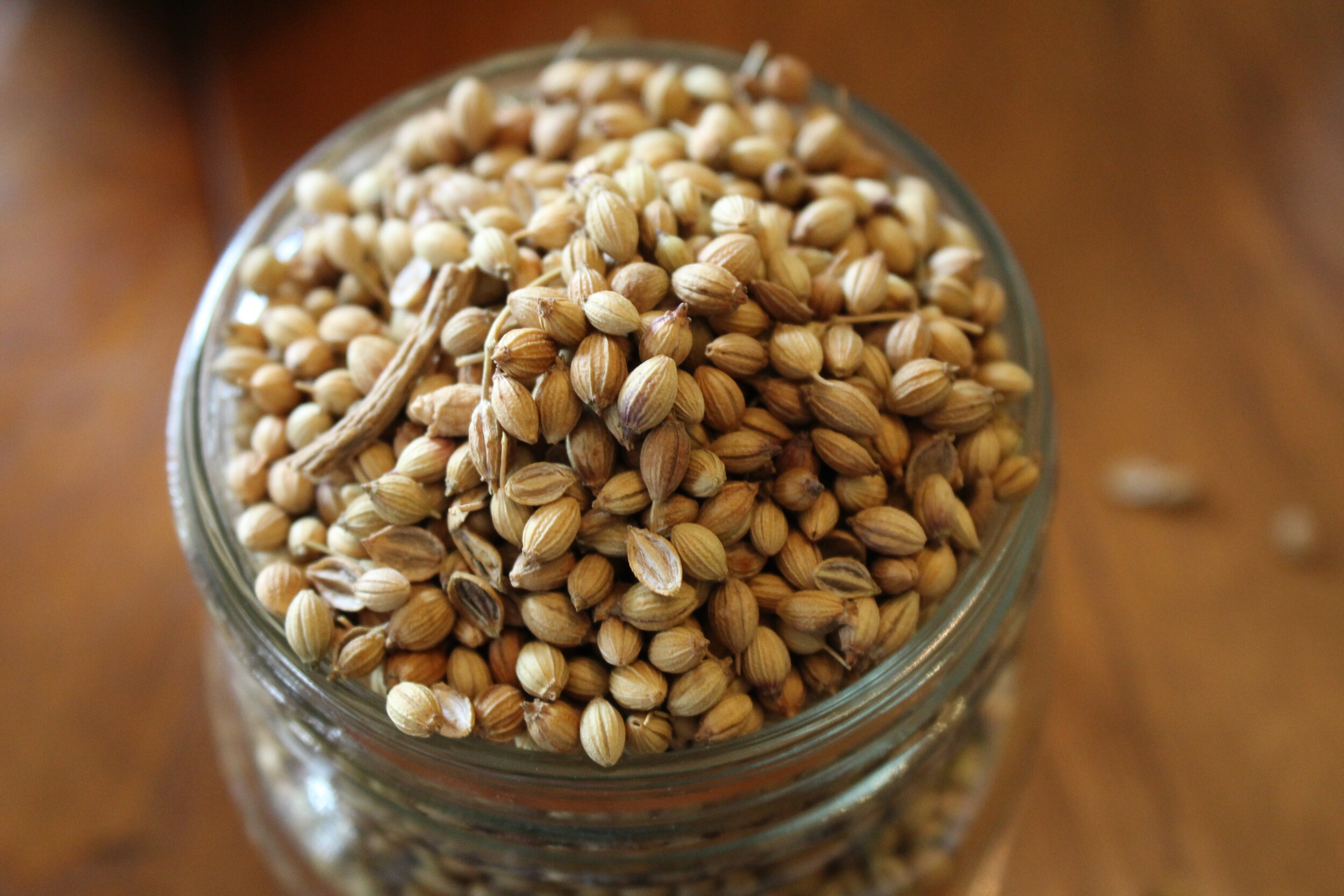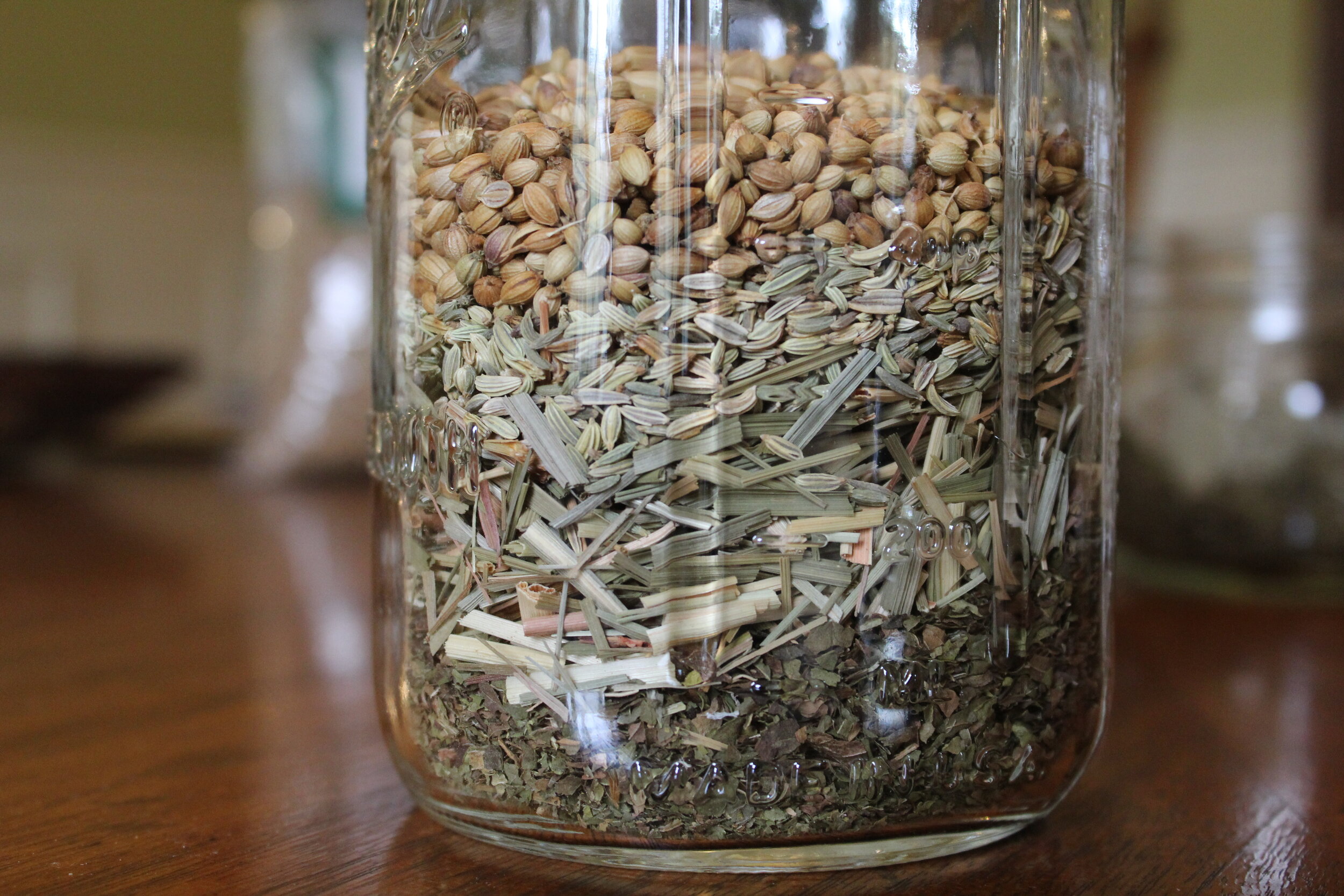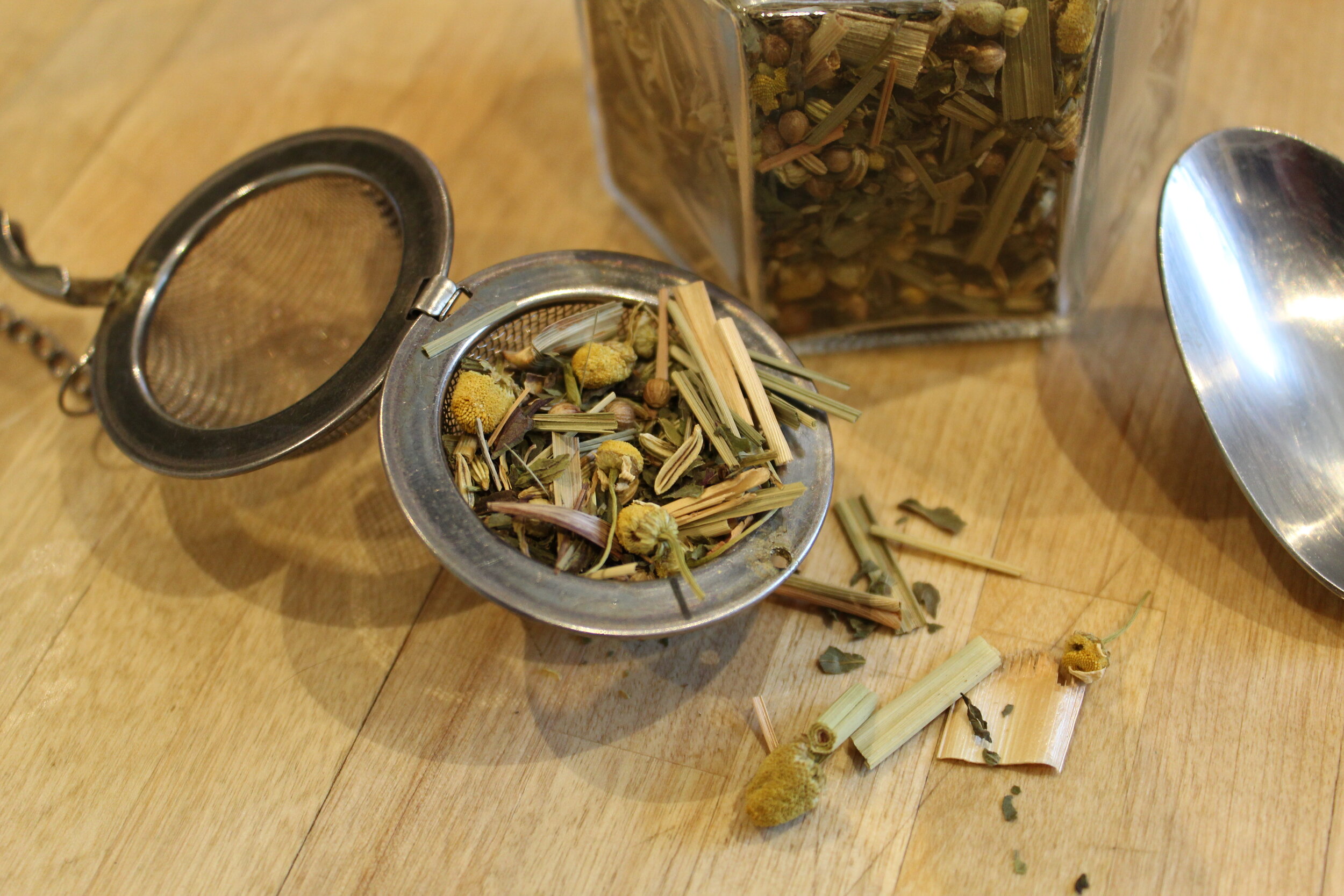After Lunch Herbal Tea Blend
Description:
This is the midday reset you’ve been looking for. A refreshing compliment to a balanced lunch, this blend supports digestion and helps relieve stomach issues. No caffeine needed as Peppermint also stimulates your mind and memory - a much needed boost to keep your day as strong as you are.
Ingredients:
Peppermint, Lemongrass, Fennel seeds, Coriander seeds.
Instructions:
Steep 1-2 tsp. in a strainer with a cup of hot water. Steep for 3-7 mins. The longer you steep, the stronger the tea.
Best Time to Drink:
After a meal to help with the digestion process and give your mouth a minty, clean flavor or anytime you need a mind and memory boost for the rest of your day.
Ingredient Spotlight - Lemongrass
While there are over 55 species of lemongrass, Cymbopogon citratus is the variety most often recommended for medicinal purposes. Native to Southeast Asia, lemongrass can also be found growing in India, South America, Africa, Australia, and the United States. In East India and Sri Lanka, Lemongrass was historically used to make soups, curries, and a local drink called “fever tea,” which was intended to treat not only fevers but also diarrhea, irregular menstruation, stomach aches and skin infections. In China, it had similar uses.
Today, it continues to be used in Cuba and the Caribbean to reduce blood pressure and to assist with digestion. It is believed that news about the Lemongrass plant and its therapeutic essential oils began to spread quickly in 1905, when a Sri Lankan researcher by the name of J.F. Jovit acquired several “Kochin Sera” plants (Cymbopogon citrates) from South India and planted them at a farm in order to conduct research. Lemongrass would eventually be commercially cultivated in Florida and Haiti in 1947.
A common theory states that the success of Lemongrass Essential Oil in the global market is due to the display of Citronella Essential Oil, a close relative of the Lemongrass plant, at the World’s Fair of 1951. According to reports, it is possible that the Philippines might have exported Lemongrass Oil as early as the 17th century but that distribution was restricted and kept secret. In order to thrive in the United States, the Lemongrass plant was initially introduced to regions with warm climates.
Health Cautions:
Educate yourself and consult a health professional before taking any herbal remedies, especially if you have pre-existing conditions, are pregnant, or are taking medications.








